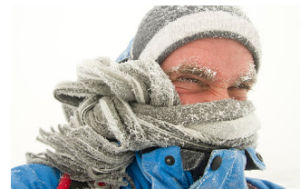Dealing with Diabetes This Winter
Dealing with Diabetes This Winter
We all experience the downsides of wintertime. As for diabetics, there are some symptoms of the season that we can relate to. We are targeting 4 of the most common concerns that happen more often during winter. Here is your guide to dealing with diabetes this winter.
Higher Blood Glucose
The frigid temperatures of the winter air cause the body to emit almost a “flight or fight” response. Stress hormones release to counteract the effects of the weather. The main stress hormone, cortisol, can be found in abundance during the colder winter months. This can contribute to insulin resistance. Checking your blood glucose is the first step to maintaining proper levels. The second step is to avoid any prolonged exposure to inclement weather conditions. Below are some more ways to avoid bringing your levels of cortisol up and keep your blood glucose in check:
- Practice yoga for at least 10 minutes daily
- Drink herbal teas before bedtime or throughout your day
- Breathe in through your nose and out through your mouth to cleanse your mind
- Try your hand at meditation
- Spend some time outdoors (when the weather permits, and bundle up!) and go for a walk
Poor Circulation
Poor circulation can make your feet susceptible to dryness. This is caused usually by a decrease in the moisturizing glands. Use a moisturizer daily to keep dry skin from itching or cracking. With all lotions apply a thin layer on the tops and bottoms of feet and avoid putting lotion in between toes because excessive moistness might cause fungal infections. Always keep your skin clean and dry and drink plenty of fluids to keep skin hydrated.
Some products we recommend are over-the-counter (OTC) lotions such as Gold Bond Ultimate Diabetics’ Lotion. Ammonium Lactate lotion has a keratolytic agent that softens already very dry cracked skin and aids in healing. That’s what differentiates ammonium lactate from other OTC products that only have skin protectants and it may be covered by insurance with a prescription.
“During harsh winter months limit frequency of bathing, refrain from using very hot water, use a mild soap, and pat skin dry. Immediately after, apply a fragrance-free lotion to lock in moisture,” states Mona Arafa, Pharmacy Supervisor at Better Living Now.
Frequent high blood sugar levels can lead to narrowing of the arteries and a reduced blood supply to the tissues, which may cause cold feet. Cold feet are another winter worry for diabetics. Frequent high blood sugar levels can lead to narrowing of the arteries and a reduced blood supply to the tissues.
Nerve damage can also cause tingling, pain, burning, or weakness in the foot. With nerve damage, you need to be careful when trying to warm your feet. It can be easy to burn them with hot water, hot water.
Dry Mouth
Dry mouth is often experienced by most people during winter. Did you know that dry mouth and cracked lips can be another symptom of diabetes? Dry mouth may be either a symptom of high blood glucose or can even be the cause of it. Along with dry mouth, have you also experienced cracked lips? We’ve all been there so apply medicated lip balm throughout the day. Some advice for preventing dry mouth during the winter months:
- Stay hydrated
- Enjoy sugar-free gum or breath mints to stimulate salivation
- Use Biotene mouthwash and toothpaste to alleviate dry mouth
Dry Eyes
As if a dry mouth and cracking skin weren’t enough, your ocular surface can dry out too. A healthy ocular surface allows us to see clearly, protects against infection, and gives overall comfort. Colder climate or excessive wind can lead to the sensitivity of this layer of the eye. This causes more discomfort or painfully dry eyes. Along with wintry effects, those with diabetes are at a higher risk of developing autonomic neuropathy. This is a condition affecting the nerves in control of tear production. Here are some of our tried and true ways to treat dry eye:
- Ophthalmologist recommended eye drops or ointments; be sure to choose brands that do not contain any preservatives or they may exacerbate the issue
- Using a humidifier in the home to ensure that the air does not get too dry
- Using a warm compress on the eyes as needed; doing this in a dark place will allow the eyes to relax and not strain during this process
There are many different preventative measures to take during the winter. Handling winter with a diabetes condition can make these months even more challenging. Consuming a diet rich in vitamins, minerals, protein, and omega-3 fatty acids will ensure that you are maximizing your treatment. Please comment below and share your diabetes winter challenges or tips.




